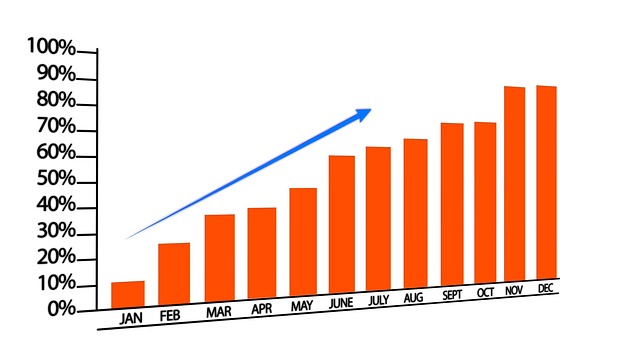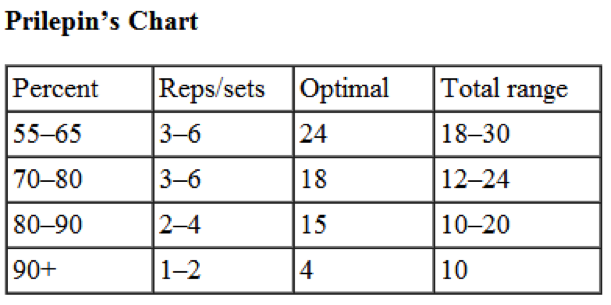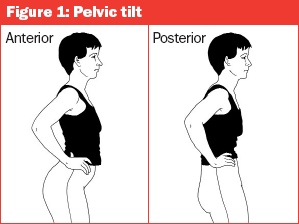How Jake Gyllenhaal REALLY Gained a Ton of Muscle
The internet is currently awash with awful articles on how Jake Gyllenhaal made his amazing transformation and gained 45lbs, going from the skinny star of “Nightcrawler” to an absolutely jacked boxer in “Southpaw”
Jake Gyllenhaal did 2000 situps and hours of workouts daily to gain 45 pounds for a movie http://t.co/hETssb46AU pic.twitter.com/pvOVGp1Vcx
— Barstool Sports (@barstoolsports) April 22, 2015
Rather than listening to all the crap claiming that the answers to Gyllenhaal’s physique success was doing 2000 sit ups a day, taking supplements or training for 6 hours every day, instead follow these tips if you’re looking to gain muscle mass the correct way.
NOTE: Now obviously I don’t know exactly how Gyllenhaal put on all his muscle mass. But if I had to deal with someone in a similar situation looking to put on as much quality muscle mass as possible, this is what I’d do. The following tips are based on evidence based, sound, smart principles that I’ve put to use on both myself AND my clients so you know they work in the real world!
1. Don’t be afraid to eat
If you’re a skinny guy looking to put on muscle, you can’t be scared of getting in the calories.
This might mean saying goodbye to your abs, at least for a little while.
Eating in a calorie surplus i.e. more calories going in than you are expending = growth
Now for some people, it will involve eating a LOT.

If you’ve got an active, strenuous job, you will be burning a ton of energy and you will need to eat enough to reflect this.
Up until a month ago, I was eating close to 4000 calories to gain bodyweight due to the active nature of my job (as a personal trainer I’m on my feet all day, demoing exercises, training myself etc.).
I’m not saying that everyone needs to be on 4000 calories/day, things are very individual in this regard. However, you’re unlikely to be hitting your energy needs unless some thought goes into it and you’re making a real effort to eat more.
2. However, don’t just cram the food in
Force feeding yourself way over your calorie needs will not add muscle at a faster rate. If this were true, we’d all be walking around as 140kg, lean monsters in a relatively short space of time.
Proper tracking of calories and macronutrients (the composition of those calories from carbohydrate, protein and fat) using something like MyFitnessPal or similar will help us maximise our rate of muscle gain, whilst keeping fat gain at bay.
Realistically, the kind of muscle growth we can expect is the following (credit to Alan Aragon):
Beginner – 1-1.5% of bodyweight per month
Intermediate – .5-1% of bodyweight per month
Advanced – .25-.5% of bodyweight per month
We can expect to see this rate of growth with a small calorie surplus of 5-10%.
Track your weight gain and if your rate of gain exceeds what’s recommended above, the likelihood is you’re gaining too much body fat. If this is the case then drop your daily carbohydrates by 25g or your fats by 10g and reassess at the end of the week.
Not gaining enough? Do the opposite and add 25g to your carbohydrate or 10g to your fats. If you train hard though I’d recommend choosing the carbs over the fat.
You can find your estimated calorie and macronutrient needs by either downloading my Free Get Shredded Toolkit. It works out all of your macros for you and gives you a weight tracker so you can easily monitor your progress and adjust things as you go along!
Or you can do it yourself with the calculations below:
[learn_more caption=”Weight Gain Calories and Macronutrients”]
– Find your maintenance calories by taking your bodyweight in lbs (or kg x 2.2) and multiplying it by 14-16 (14 if you’re fairly sedentary, 16 if you’re active, 15 if you’re somewhere in the middle.
For example as an active 83kg (183lb) guy, this gives me a maintenance level of 2928 calories (183 x 16).
– Take this number and multiply by 1.1 to give a 10% surplus
In my example 2928 x 1.1 = 3221 calories
– Now we can work out our macronutrients. First protein.
Take your bodyweight in lbs. This is your protein intake. For example 183lb = 183g protein/day
Multiply this by 4 to get the total calories from protein.
183 x 4 = 732 calories from protein
Minus this from our total calories to see what we have left for fats and carbohydrates
3221 – 732 = 2489 calories remaining
– Next to work out fat.
20-30% of your calories should come from fat. Go towards the lower end if you want more carbohydrate, or towards the higher end if you prefer to have some room for fattier foods in your diet. It’s just down to personal preference.
I like to sit somewhere in the middle, so I’m going for 25% of my calories from fat
3221 x 0.25 = 805 calories
Fats have 9 calories per gram so if we divide the above number by 9 we get our fat intake in grams
805 / 9 = 89g fat
– Finally to work out our carbohydrate, take the total calories and minus the protein and fat calories and divide the final number by 4.
3221 (total calories) – 732 (protein calories) – 805 (fat calories) = 1684 calories from carbohydrate
1684 / 4 = 421g carbohydrate
So my initial macronutrients are:
183g protein
89g fat
421g carbohydrate
Hitting these macronutrients within 5-10% will be sufficient to progress.
As briefly mentioned above, when your weight gain stalls, add a little extra carbs or fat to get the scale moving again.
[/learn_more]
3. Lift in a variety of different rep ranges
The powerlifters tell you to lift heavy in the low rep (1-5) ranges to gain muscle.
The bodybuilders tell you to catch a pump in the higher rep (6-20) ranges to gain muscle.
Complete opposite ends of the spectrum, but they’re both right!
According to muscle hypertrophy expert and researcher Brad Schoenfeld, muscle growth may occur best in the middle rep ranges, i.e. 6-12 reps per set. But by exclusively training in this zone, you may be leaving some potential muscle growth on the table.
Performing heavy strength work will help you handle heavier loads which increases your ability to lift heavier loads in your middle rep range work. Heavier loads for same reps = increased demand on the muscles which in turn = more growth.
Training in the higher rep ranges may improve our ability to negate fatigue. This will help us avoid fatigue whilst training in the middle rep ranges. This will potentially help us squeeze out a few more reps at a given weight, which increases the time under tension on the muscle, helping us achieve more growth.
We could periodise in training phases focussing on these different rep ranges.
For example, you could have a 4-6 week phase improving maximum strength, focussing mainly on the 3-5 rep range, then a 4 week phase focussing on higher rep work in the 12-20 rep range and to finish, a phase working mainly in the 6-12 rep range.
OR you could combine them in the same training phase.
For example, if your focus is increasing mass in your chest, you could start your session with a strength move, e.g. a bench press performing 3 heavy sets of 5, following this up with some incline dumbbell presses for 3 sets of 8-12 and finally two sets of 20 reps on the dumbbell flye.
I’ve included a handy table below that explains how you might put the information above into a sets x reps format:
Not sure how to put this into a program?
I offer a very reasonably priced training program design service, enquire here.
4. Employ linear progression
If we do the same thing over and over again, we become stagnant and no longer improve. This is because the body does not have a sufficient stimulus to adapt in the way we want it to, i.e. increase muscle size.
This is where linear progression, or trying to consistently improving upon a certain variable over time (could be weekly, monthly or annually) comes in.
By increasing the intensity or magnitude of a stimulus, we kick the body into adapting to its new stress, or in other words, in our situation, gaining muscle mass.

We need to make this happen in both our training and nutrition.
In training, we should be looking to increase one or more of the following over time to progress:
- Intensity – lifting more weight. Doesn’t need to be much. Small gains of even 1.25kg on the barbell add up over time. You can expect to add weight to the bigger lifts quicker than smaller ones, e.g. a week on week gain of 5kg on a squat would be far more likely to happen for longer than say, a bicep curl.
- Volume – lifting more weight in total over all your sets. You could do this by increasing the number of sets you perform, the number of reps you crank out per set or to a lesser extent, just increasing the intensity.
- Density – performing the same amount of work, or more in a given period of time. For example, in week 1 if you perform 3 sets of 5 of 100kg in the bench press in 15 minutes, then in week 2 you perform it in 12 minutes, that still counts as progression.
- Mechanical changes – this is a little different to the above, but it involves changes to the technique to increase stress on the muscle. For example, progressing from doing 100kg x 5 back squats to doing 100kg x 5 front squats will increase muscular stress on the quads and therefore affect growth. Alternatively you could focus on form. Performing a set of the same weight with better form from one week to the next could still count as progression. Performing an exercise with proper technique will likely increase stress on the target muscle, again positively influencing growth.
In our nutrition, progression can be employed by gradually increasing calories over time. At a given level of muscularity we will require a certain amount of calories. Beyond this we will need extra to fuel growth.
Remember though that the progression should be slow and that you cannot force muscle growth just by eating a silly number of extra calories. Make it controlled and measured, as mentioned in point 2.
5. Make recovery a priority
You can train all you want, but if you’re not recovering, you’re not improving and gaining the muscle mass you desperately want.
There are two main facets of recovery, one is adequate nutrition, but as we’ve spoken about that above in plenty of detail, let’s discuss the other thing affecting our recovery… sleep.
Without enough sleep our progress goes down the pan.

For starters, lack of sleep may have an association with increased injury risk, and you sure as hell can’t train if your hurt.
Secondly, not getting sufficient sleep negatively affects the important hormones for optimal body composition. Drops in testosterone, growth hormone and an excessive increase in cortisol all may occur from sleep deprivation.
Seriously consider napping when you can and making your sleep a priority.
Not enough people do this and instead prefer just to waste their time focussing on other, far less worthwhile stuff like fancy post workout nutrition protocols or excessive mobility work.
Nail the basics and 90% of the results will come!
Summary
1. Make sure you’re eating enough.
2. Track your macronutrients. Have realistic expectations for weight gain to ensure you’re gaining mostly muscle and not fat.
3. Lift in a variety of rep ranges so you gain strength, increase your fatigue resistance as well as focussing on training in primarily the 6-12 rep range.
4a. Focus on linearly progressing in your training. Try and improve from one session to another on either increasing your intensity, volume, density or changing mechanical aspects of your training to make it tougher.
4b. Additionally, focus on increasing your nutrient intake when your weight gain stalls.
5. Make your recovery a priority. Get as much quality sleep as possible for optimal body composition changes.





